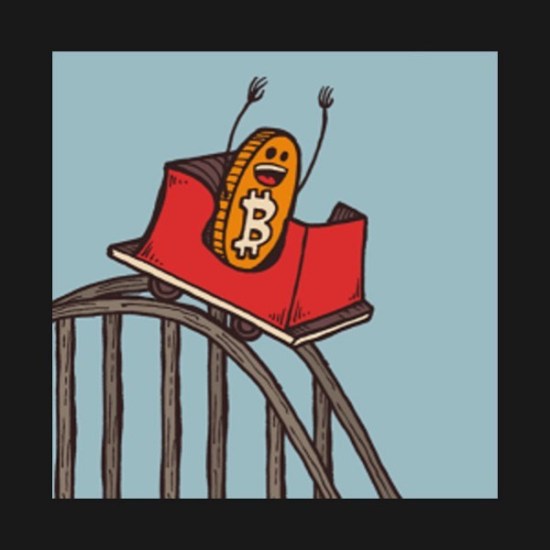Skeptic’s Guide to Bitcoin: Investing in Bitcoin
| If you find WORDS helpful, Bitcoin donations are unnecessary but appreciated. Our goal is to spread and preserve Bitcoin writings for future generations. Read more. | Make a Donation |
Skeptic’s Guide to Bitcoin: Investing in Bitcoin
By Su Zhu & Hasu
Posted March 6, 2019
This is part 4 of a 4 part series. See additional articles below
- Part 1 Skeptic’s Guide to Bitcoin: An Honest Account of Fiat Money
- Part 2 Skeptic’s Guide to Bitcoin: Unpacking Bitcoin’s Social Contract
- Part 3 Skeptic’s Guide to Bitcoin: Bitcoin and the Promise of Independent Property Rights
- Part 4 Skeptic’s Guide to Bitcoin: Investing in Bitcoin

We don’t talk much about price in this blog, but we will make an exception today to show how to value bitcoin using a high-level approach. We’ll highlight three significant trends in the world and suggest how either one of them could lead to increased demand for neutral, private money in the future.
How to value Bitcoin

On a long enough timeframe, valuing bitcoin is straight-forward. The market finds a price based on available supply and demand. When more people want to buy bitcoin than sell it, the price goes up and vice versa. For most types of assets, a price increase entices producers to make more of it, pushing the price back down. Likewise, a price decrease leads to a decrease in supply, making the price go back up. As a result, most goods tend to be relatively price-stable near their cost of production.
Bitcoin has a fixed supply. There will only ever be 21M units, and we always know how many of them exist. The market can still try to create “substitute goods” (other cryptocurrencies with similar properties) to increase the supply. We fully expect this to (continue to) happen, but money has immense “brand value” in the form of network effects, liquidity, and integration in existing financial infrastructure. Bitcoin’s supply isn’t entirely inelastic to changes in demand, but certainly less so than other assets, leaving upside to be captured by existing owners rather than producers.
The sum of all bitcoin multiplied with their price is called market capitalization. Comparing “market caps” of assets like fiat currency, real estate, stocks or commodities allows us to see how much value people store in them at any given time. Bitcoin’s market cap today is $80b, which is small compared to what we could see as potential target markets to disrupt:
- US dollar notes held abroad: around $1T, including over 75% of all $100 bills in existence (source)
- Global base money: $19.6T (source)
- Gold held for investment purposes: around $1.1T privately held (excluding jewelry) and $1.3T held by central banks (source)
Since the supply side of bitcoin (and substitute goods) is less responsive to changes in demand, we expect rising demand to manifest in a higher exchange price. We see three primary sources of such future demand.
Demand for digital cash
90% of all money today is virtual. It is created when someone takes a loan and henceforth lives on a bank ledger — until the debt is paid and the money destroyed or it is withdrawn as cash.
The growing trend away from physical cash to digital payments is understandable. Cash has the annoying property that you need to be in the same location to exchange it. Most of us are also paid digitally for the work we do, so to pay in cash one would have to constantly replenish it.
Countries that have abandoned the use of physical cash altogether are called “cashless”. It can happen without coercion, like in Sweden. In other countries like India, the government has demonetized larger denomination banknotes. In China, digital payments serve as a tool of social control and the backbone for a new social credit system.
Central banks around the world are enthralled by the idea of negative interest rates— the ultimate holy grail of monetary control. In a cashless society, they can directly tax people’s bank accounts to disincentivize saving and encourage “aggregate spending” in the form of consumption and investment.
Digital payments are highly efficient and convenient, but they are not “money” when it comes to the properties that our parents and their parents have been used to. It is a new form of money that makes very concrete tradeoffs. Digital payments receive their efficiency gains from including a trusted third party in every transaction that maintains a central ledger that it can much easier update when told to. This arrangement doesn’t come without drawbacks: The intermediary monitors all financial activity, can refuse transactions he disagrees with, or even confiscate funds altogether.
Cash, on the other hand, can be exchanged peer-to-peer between people. The transactions are permissionless, private and immediately final (no one can revert them after the fact.)
As our reliance on financial intermediaries grows, so does the importance of who controls them. Today, a small number of payment companies have a disproportionally large impact to define what speech is acceptable online and what businesses should be allowed to operate. Money is the lifeblood of the economy — someone who is cut off by payment processors loses his autonomy and almost any chance to run his business.
Every year, the world is moving closer towards going “cashless”. The reason, in our opinion, is that the benefits of digital payments are immediate and visible to the user, while the downsides are invisible until they matter. As a consequence, the global supply of physical cash will continue to drop. This drop, however, is not an accurate reflection of the demand to hold it. Governments, central banks, and large corporations have an incentive to push for a cashless society (though not all of them do), while cash has no coordinated, commercial interests backing it. Demand for cash is also underrepresented as long as financial intermediaries can be wholly trusted, which isn’t guaranteed to last forever. It seems unnecessary like fire insurance — until it burns.
Bitcoin is the first and only form of money that offers cashlike properties but can be stored and transferred digitally. When governments no longer provide physical cash, there could be a lot of excess demand for an asset with cashlike properties looking for a release valve — and bitcoin is in a unique position to offer that.
Demand for a global, neutral settlement network
Digital payments work for parties who have a middleman they can trust. Since WW2, the US has been this trusted middleman for most of the developed world. Lately, the US has shown they are willing to weaponize the financial system to command their political will (by pressuring SWIFT into cutting off Russia and Iran as part of their sanctions). It is not well received by their allies.
Additionally, political moods in many countries are turning towards isolationism, both in Europe (Brexit, revolts in France) as well as the US (trade war with China, threats to leave nuclear arms treaty with Russia). US-led soft power institutions like the WB, IMF, and WTO are gradually losing their influence. These were the main tools for projecting US power abroad, and their disenfranchisement will leave power vacuums and uncertainty in their wake. We believe the world is currently moving away from having one trusted protector and intermediary, to a multipolar world order.
As frictions between world powers increase, the willingness to trust financial infrastructure controlled by someone else will decrease. That creates demand for a financial network that is not controlled by one party but is politically neutral. Even online, censorship is on the rise. China’s internet is effectively cut off from the rest of the world, and Russia is planning to follow suit.
Bitcoin fulfills the conditions of being neutral and censorship-resistant. While in the past, controversial activity found a home in Bitcoin (like Silk Road and Wikileaks), the world could wake up to the benefits of censorship-resistance as a positive trait that is no longer “just for criminals.”
Demand for a hedge against failure of the existing system
Many people are worried about the overleveraged state of the world economy and our financial system. Both consumer and sovereign debt levels are at all-time highs relative to GDPs, while interest rates, especially in Europe and Japan, are still zero. When the economy slows down, there is little that central banks can do to ease the pain and kickstart the economy.
Further, a widespread shift in demographics has created a massive gap between future government liabilities and income from taxes. For example, the US government doesn’t “just” owe $20T in sovereign debt but ten times as much in domestic debt, in the forms of entitlements programs. Many believe that the only way to pay up is by throwing the US dollar under the bus and devalue it to meet at least nominal obligations.
Given, this is a doomsday scenario and not very fun to think about, but it’s a reality that any investor has to deal with today. Gold has traditionally been a trust anchor when investors flee out of fiat currency, but it is also highly co-opted by governments, hard to secure and repatriate — as some countries experience today. We believe that over a long enough timeframe bitcoin can become the gold of the internet-native generation and take its place as a hedge against government and central bank failures.
“Bitcoin as doomsday insurance” is a narrative that is picking up steam and that is now commonly cited even by skeptics such as Ken Rogoff as a primary use case of bitcoin. As more people are getting worried about systemic risk, demand for bitcoin as limited “insurance tickets” could rise accordingly.
That bitcoin does, in fact, work as an exit ramp for weak local currencies can be seen in Venezuela and other South and Central American countries, where bitcoin is increasingly adopted “on the ground” as an alternative to the US dollar. A recent study about global data from the peer-to-peer exchange LocalBitcoins found that “ in the 4th quarter of 2018, as Bitcoin price and interest seemed to hit their doldrums, 23 countries on LBC had their best quarters ever. Almost all of these countries are in the developing world. “
The US dollar is still the most sought after black market currency, but bitcoin is better at some things that make it an attractive alternative for people in developing countries. It’s easier to protect against confiscation (for example using a brain wallet) and transfer digitally — especially across borders. Skeptics of bitcoin often miss the fact that currency competition is like running from a bear — you only have to outlast your slowest friend. Bitcoin, in its current immature form, competes with the weakest of fiat currencies, not with the US dollar, Euro or JPY, and does so despite its price volatility.
Is Bitcoin’s volatility a problem?

I’m often asked if bitcoin’s price volatility will prevent adoption. Bitcoin is volatile for two reasons. First, bitcoin’s supply is fixed and doesn’t react in changes to demand. Second, as a young currency, it is mainly used for speculation today. Its price is a function of deferred expectations of growth (and expectations of other people’s expectations, and so on), all of which get revised all the time. The best way to think about volatility is as a temporary transaction cost. As bitcoin’s market capitalization grows, less of its value will be from speculation (as there is less future growth to bet on) and more from fundamental usage. That will lower bitcoin’s volatility and make it cheaper to use.
While it can be seen as a chicken-egg problem initially — bitcoin needs adoption to become price-stable, but many forms of adoption require price-stability — using bitcoin has a different value to different people. Bitcoin’s success as money shouldn’t be judged by its ability to perform consumer payments. Instead, bitcoin is first adopted by those who can tolerate the costs because it helps them better than existing alternatives— or because there are no alternatives. With every additional group of people bitcoin serves, it becomes less volatile and cheaper to use, making it more attractive for use cases which are slightly more price-sensitive. A positive feedback loop! The fact that anyone uses bitcoin today, despite its volatility and complexity, is amazing to me and should be seen as a ringing endorsement by the market.
Summary
Bitcoin is a new financial network with a token (also called bitcoin but with a lowercase ‘b’) that is currently in its monetization phase. During this phase, its price is largely determined by expectations of future growth — making it expectedly volatile. Despite the cost and complexity, people use bitcoin on the ground today in developing countries and to make unstoppable transactions online. The more people use it, the less volatile it will become, encouraging further adoption.
Since bitcoin’s supply is fixed (and substitute goods hard to make), the price is largely a function of demand to hold it. We identified three major trends in the world that could lead to significant demand down the road. Demand, that bitcoin is well positioned to serve — often as the only competitor — and that could create significant upside for existing holders.
Acknowledgments: Thank you to Nic Carter for his excellent feedback. This content should not be relied upon as legal, business, investment or tax advice. You should consult your advisers as to legal, business, tax and other related matters concerning any investment. Furthermore, this content is not directed at nor intended for use by any investor or prospective investor, and may not under any circumstances be relied upon when making investment decisions.